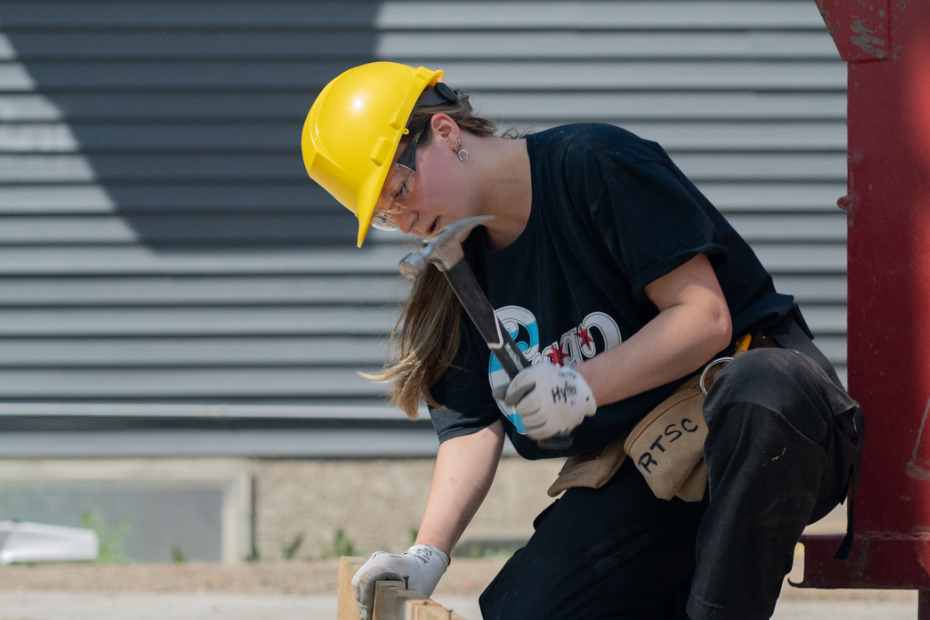After immigrating from India to Mississauga, Ontario with her 4-year old daughter a couple of years ago, Gauri Sathe says the temperatures during their first Canadian summer were easy to adjust to. The mild summer temperatures were a change from Mumbai’s hot and rainy summer months. Then in November, the first sight of the flurries had Gauri concerned. Gauri quickly took her daughter shopping for insulated outerwear, weatherproof boots, and toques to keep her warm and cozy. Being new to Canadian winters, she asked salespeople for guidance. While she didn’t feel the need to splurge on herself, she didn’t compromise for her daughter.
“I didn’t look at the price tag for my daughter, and I chose only the best for her so she doesn’t fall sick,” she says.
What are Winters Like in Canada?
If you move to the Great White North, you’ll quickly learn that Canadians love to talk about the weather.
Winter weather in Canada may start as early as November, but generally colder temperatures occur from December through February. Unless you are immigrating to the British Columbia coast where winters can be more moderate, Canadian winters are often freezing cold (0°C) and below-freezing temperatures are not uncommon.
Tips for Newcomers to Stay Warm in Winter
Canadians will tell you that there are two ways to stay warm in the winter: Be well-prepared and well-informed, or stay indoors.
Stay informed
Weather plays a crucial part in everyday life in Canada, unlike countries where temperatures and precipitation are more consistent — the weather in Canada may vary several times a day. Consider using a weather app on your smartphone to get updates in real time, or check your local conditions from the Government of Canada.
Get to know wind chill
Canadian winds can make temperatures feel much lower than they are. For example, if the temperature outside is -10 C°, the weather forecast will factor in the wind chill and its effect on your body, indexing the temperature with wind chill as feeling -20 C°. Wind chill is also called the “feels-like” temperature.
How to Dress for Canadian Winters
In addition to knowing the current weather conditions, you can protect yourself from Canada’s colder months by dressing appropriately to brave the cold:
Outer Layers
- Dressing in layers allows you to regulate your temperature, but an outer layer that is wind and water resistant may be your strongest protection against the elements.
- Synthetic-filled jackets: Synthetic fabrics provide great insulation and are often waterproof, wind-resistant, and may be priced may be lower than natural fabrics.
- Down jackets: If you choose to buy a down-filled jacket, goose down is considered warmer, but duck down is often more available. Down-alternative fillings made from natural or synthetic fabrics can also provide an affordable alternative.
Additional Layers
Thinner insider layers allow you to regulate your temperature by taking off a layer or two as needed.
- Start with thermal (non-cotton) underwear as a base layer to wick moisture away from your skin.
- Next, wear a thin long-sleeved shirt under a wool sweater or fleece.
- Consider tights or leggings for under your trousers.
- Wool or thermal socks can keep your feet warm.
- Comfortable, waterproof snow boots with anti-skid soles will help keep you dry and from slipping on ice.
- Avoid cotton next to the skin in winter. It absorbs sweat and doesn’t dry quickly. You can freeze in a wet cotton hoodie.
Cover Your Extremities
Cover your head, hands, feet and ears to prevent heat loss when you step out. Wear a toque (knit winter hat), hood, earmuffs, neck scarf and insulated gloves.
Protect Yourself from UV Rays
If you are planning to be outdoors for long hours, wear sunscreen and lip balm with SPF or above for protection against the harmful UVA and UVB rays of the sun that can reflect off the snow.
When you are new to Canada, don’t be afraid to step out during the colder months, but do plan ahead. The more you embrace all there is to do in Canada in the winter, the faster you may begin to enjoy the beauty of the Great White North.
For more useful tips and information on settling in Canada, visit rbc.com/newcomers.
This article is intended as general information only and is not to be relied upon as constituting legal, financial or other professional advice. A professional advisor should be consulted regarding your specific situation. Information presented is believed to be factual and up-to-date but we do not guarantee its accuracy and it should not be regarded as a complete analysis of the subjects discussed. All expressions of opinion reflect the judgment of the authors as of the date of publication and are subject to change. No endorsement of any third parties or their advice, opinions, information, products or services is expressly given or implied by Royal Bank of Canada or any of its affiliates.



















